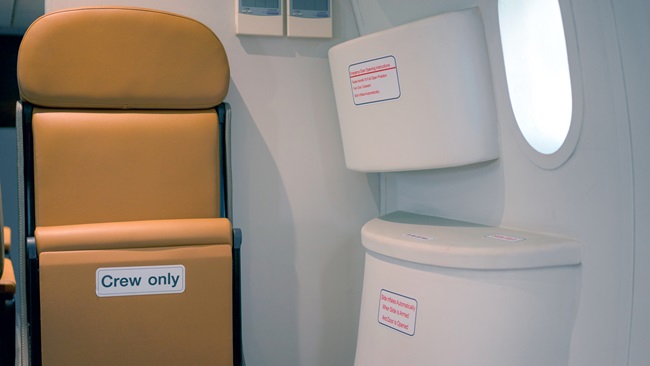Career Pilot: Silver lining
The sun will come out tomorrow

Rebecca is one of the many. After a career as a flight attendant for a major airline, she shifted her sights toward a seat up front. In late 2019 and early 2020, she seemed to be on her way to realizing that dream. Somewhat short of the magic 1,500-hour mark, she exercised her CFI certificate at a Florida flight school and then parlayed some of her hard-earned funds toward the purchase of a spiffy little Cessna 150 Aerobat and chugged through the southern skies garnering the remaining few hundred hours to ATP land. The offer for employment at a regional was already in hand with a target class date of April. And then….
Her story is typical of more than a few aviators who found their career path temporarily derailed. Although it is only natural to become demoralized, there is an old saying Mom believed in: “Behind every cloud is a silver lining.” So, take heart! This industry has always rebounded. Although the airline passenger carriers have been set back, the airborne cargo haulers are doing just fine, and many air taxi and corporate operators have experienced an uptick in business.
Kit Darby (KitDarby.com) has been an aviation career consultant for decades and has provided myriad preparatory services for thousands of fledging pilots. He has these observations: “We expect that there will be an initial overreaction to the conditions caused by the virus pandemic with a partial bounce-back, followed by a slower recovery over several years. We expect the revenue passenger miles [RPMs] to return quickly to 70 to 80 percent of the previous levels in a year or less, followed by a two- to three-year recovery back to the previous levels and beyond. This timeline could be shortened by the introduction of an effective vaccine or treatment over the coming months.
Behind every cloud is a silver lining. So take heart! This industry has always rebounded.“The need for pilots will return well before the full market recovery in RPMs due to significant future annual pilot retirements. The industry alone will need an average of 4,100 new pilots per year and cumulatively, more than 80,000 pilots will be needed in the next 20 years to replace retiring pilots. The return to normal growth will require pilots too, nearly doubling this number. These large age-65 pilot retirement numbers will shorten the downturn in pilot hiring by a year or possibly two for major airline pilot hiring. The approximately 5,000 early pilot retirements from the recent airline/union furlough reduction programs represent over a year of normal retirements.”
Feeling a little better? Another indicator of the bullishness on the future comes from the FAA and its new Aircraft Pilots Workforce Development Grant Program.
In fiscal year 2020, Congress appropriated $5 million to create and deliver a training curriculum to address the projected shortages of aircraft pilots. In short, the FAA is investing in the future aviation workforce by establishing a grant program to expand the aviation workforce and provide meaningful aviation education designed to prepare students to become aircraft pilots, aerospace engineers, or unmanned aircraft systems operators, and support the related professional development of teachers.
Congress approved the program through the end of fiscal year 2023. It is providing grants to academia and the aviation community to help prepare a more inclusive talent pool of pilots and aviation maintenance technicians, to inspire and recruit the next generation of aviation professionals.
Projects supported under the aviation workforce development grants must create and deliver a curriculum designed to provide high school students with a meaningful aviation education that prepares them to become aircraft pilots, aerospace engineers, or unmanned aircraft system operatorsas well as to support the professional development of teachers using the above curriculum. Access to this grant funding is not available to individuals but to air carriers; Part 61/141 flight schools; accredited higher education institutions, secondary schools, or high schools; state and local governmental entities; and organizations representing aircraft users, aircraft owners, or aircraft pilots.
The pot is certainly sweet for those who apply in a competitive process. The FAA may award between $25,000 and $500,000 for any one grant in any one fiscal year.
Anyone interested should research the Aircraft Pilots Workforce Development Grant Program website (faa.gov/about/office_org/headquarters_offices/ang/grants/awd/); a listing of personal scholarships and grants also is available (faa.gov/education/grants_and_scholarships/).
Although the hiring outlook is gloomy now, the FAA and industry watchers like Darby already are seeing glimpses of that silver lining. Take comfort in that and keep preparing for the day when the sun breaks through.
Oh, and about Rebecca: She landed a multi-month gig flying Cessna 172s for an aerial survey outfit to stay active. That’s great advice for those sidelined waiting for the call to training—keep flying!


